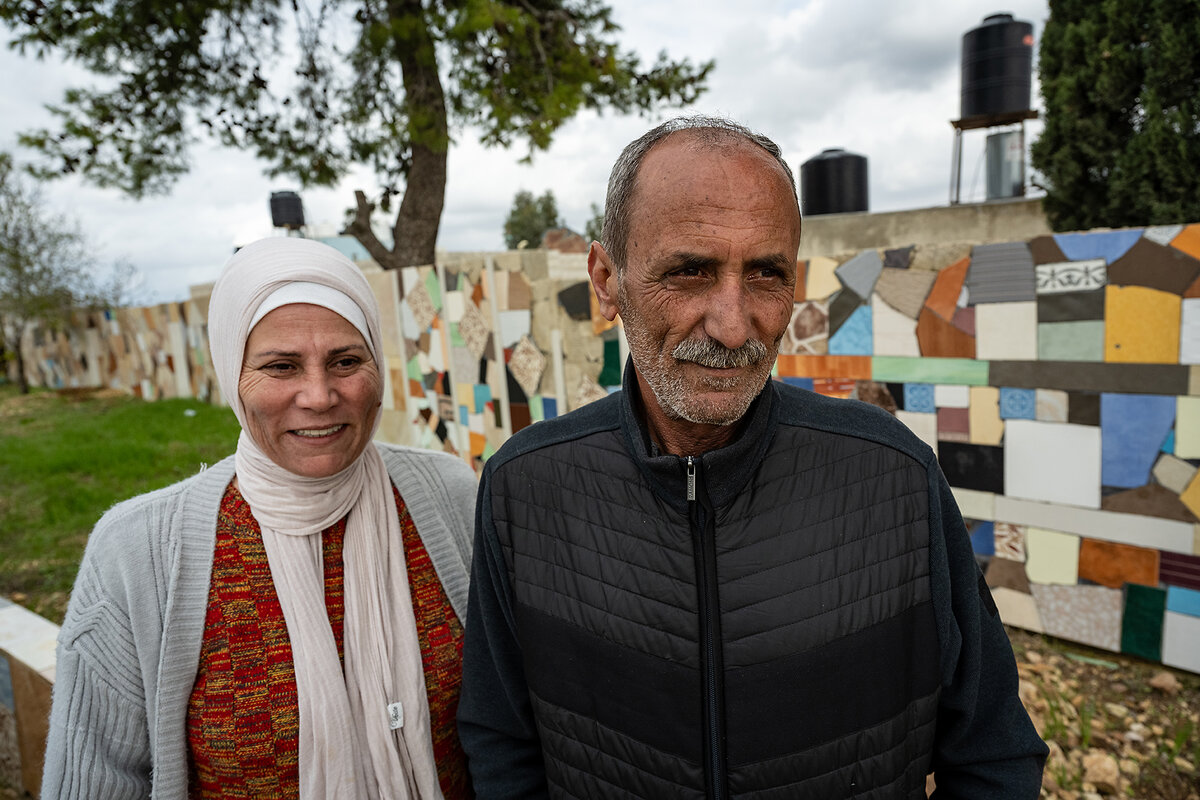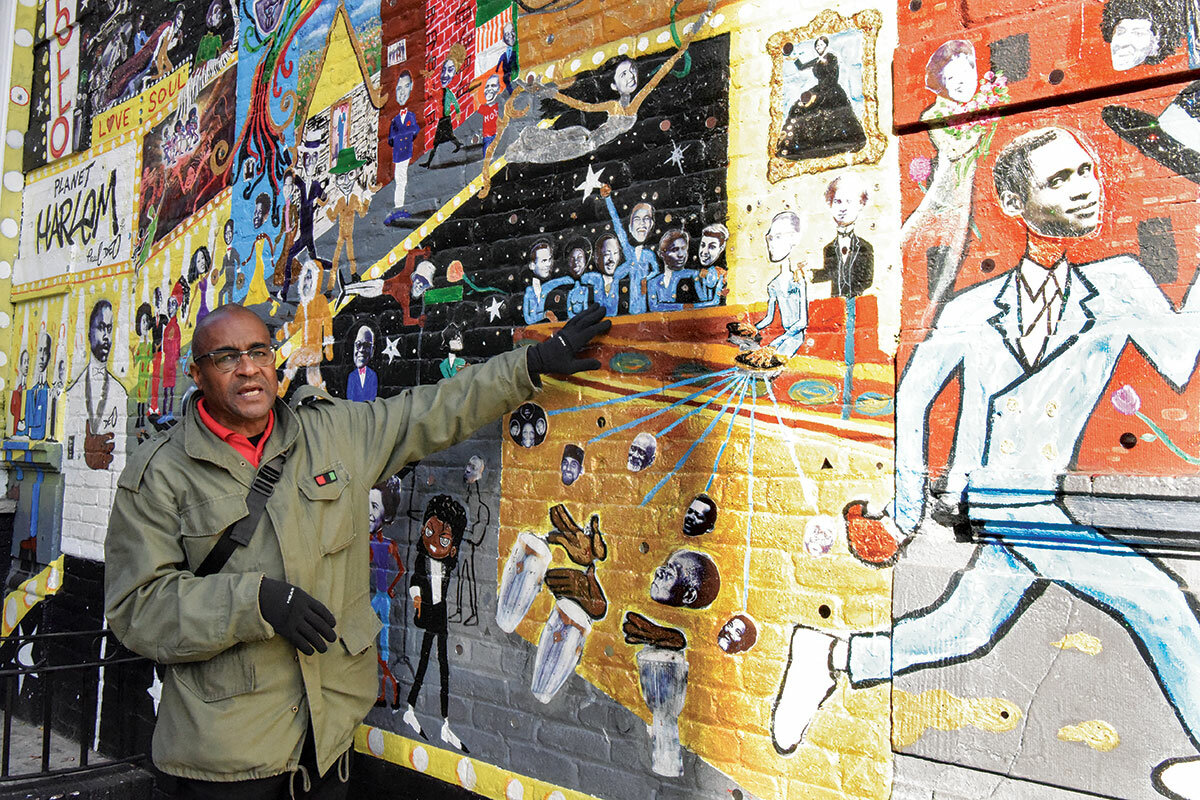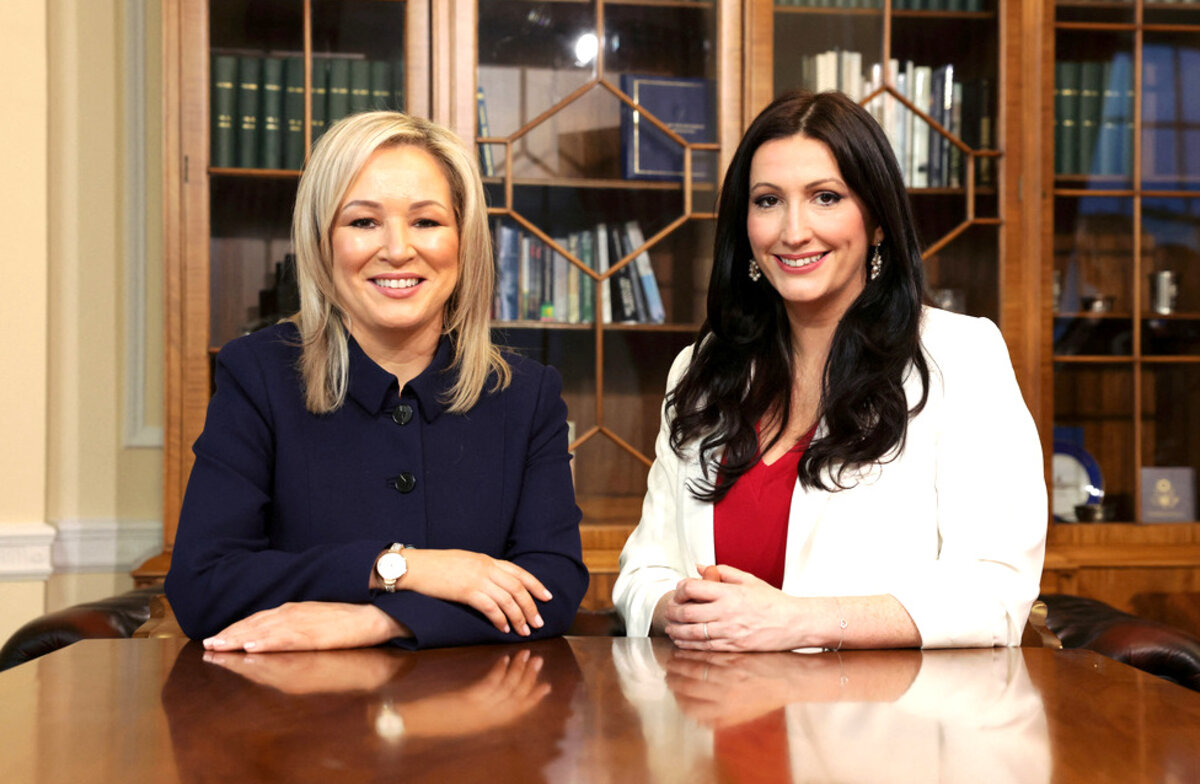Headline-grabbing criminal cases against the former U.S. president are getting delayed or are running into snags. But high-dollar civil judgments seem likely to have a real impact on his personal finances.

Why is Christian Science in our name?
Our name is about honesty. The Monitor is owned by The Christian Science Church, and we’ve always been transparent about that.
The Church publishes the Monitor because it sees good journalism as vital to progress in the world. Since 1908, we’ve aimed “to injure no man, but to bless all mankind,” as our founder, Mary Baker Eddy, put it.
Here, you’ll find award-winning journalism not driven by commercial influences – a news organization that takes seriously its mission to uplift the world by seeking solutions and finding reasons for credible hope.
Explore values journalism About usMonitor Daily Podcast
- Follow us:
- Apple Podcasts
- Spotify
- RSS Feed
- Download
 Mark Sappenfield
Mark Sappenfield
The first thing I noticed about Ken Makin was the name of his podcast: Makin’ a Difference. Here, I thought, was a kindred spirit. So it has proven to be.
Many of you know Ken well from his wonderful columns. Today, he takes a look at a new embrace of the Harlem Renaissance. It’s the perfect time to announce him as our new cultural commentator. I could say more, but Ken says it much better.
“There are few outlets with the courage, let alone the conscience, to have a worldview that seeks to promote the honor and dignity of all people,” he tells me. “From my first perspective about Dr. Martin Luther King to the work that I’ve done and hope to continue to do, my goal is to emphasize humanity, as a lover and a defender.”
We couldn’t be happier that he will do that important work right here.
Already a subscriber? Log in
Help fund Monitor journalism for $11/ month
Monitor journalism changes lives because we open that too-small box that most people think they live in. We believe news can and should expand a sense of identity and possibility beyond narrow conventional expectations.
Our work isn't possible without your support.
Today’s stories
And why we wrote them
( 6 min. read )
Today’s news briefs
• Taylor Swift breaks Grammys record: She wins album of the year for “Midnights,” breaking a Grammys record for most wins in the category with four.
• El Salvador president reelected: Voters cast aside concerns about the erosion of democracy to reward Nayib Bukele for a fierce gang crackdown that transformed security in the Central American country.
• Fed to cut interest rates: The move is expected to begin as early as May. Federal Reserve Chair Jerome Powell says America’s job market and economy are strong, with no sign of a recession.
• Chile wildfires: Wildfires are sweeping across the South American country as authorities battle blazes fanned by high temperatures and strong winds.

( 5 min. read )
While the Gaza Strip is the main battlefield in the Israel-Hamas war, the West Bank is still very much part of the conflict. Israeli arrests and raids there are only reinforcing a wartime radicalization of the Palestinian population.
( 5 min. read )
In the Netherlands, an e-bike company bankruptcy masked a thriving startup ecosystem. What’s behind the small country’s entrepreneurial spirit?
( 4 min. read )
Southern California’s response to flooding and mudslides points to how the state is struggling to handle increasingly supercharged weather.
( 8 min. read )
The Harlem Renaissance is the subject of a new exhibit at the Metropolitan Museum of Art. Our cultural commentator relished his time walking the same streets that sheltered Langston Hughes, Malcolm X, and Alain Locke.
The Monitor's View
( 3 min. read )
With about 180 violent conflicts around the globe – the highest number in more than three decades – the world could use fresh models in peacemaking. Northern Ireland provided such an example 26 years ago with an agreement that ended a sectarian conflict known as “The Troubles.” Last week, the region – which is formally part of the United Kingdom but on the same island as the Republic of Ireland – again showed what it takes to build trust across lingering divides.
A new agreement brokered with Britain not only restored a functioning government after two years of legislative deadlock but also allowed two women – from the main political powers – to be elected as joint executives with equal power and responsibility. And in a highly symbolic step, the “first minister,” Michelle O’Neill, is from Sinn Féin, the party that was once the political arm of the paramilitary Irish Republican Army that fought for unity with Ireland.
But it was really what each woman said that reflects the lessons learned in Northern Ireland since the 1998 Good Friday Agreement.
In a note of humility, Ms. O’Neill said she was “sorry for all the lives lost during the conflict. Without exception.” She said the restoration of a government is a “moment of equality” and that “wherever we come from, whatever our aspirations, we can and must build our future together.
“As an Irish republican I pledge cooperation and genuine honest effort with those colleagues who are British, of a unionist tradition and who cherish the Union. This is an assembly for all – Catholic, Protestant and dissenter.”
The deputy first minister, Emma Little-Pengelly of the pro-Britain Democratic Unionist Party, said, “We are all born equal – and the people who look on this sitting [of the Northern Ireland Assembly] today demand us to work together.
“The past, with all its horror, can never be forgotten,” she added. “While we are shaped by the past, we are not defined by it.”
Although the question of unification with Ireland remains open, both leaders recognize that, first of all, the people in the region need good government. The two years of nongovernance was triggered by the U.K. exiting the European Union while Ireland stayed in. The Democratic Unionists pulled out of Northern Ireland’s Legislative Assembly until a deal was reached last week on preserving a free trading of goods between Britain and Northern Ireland.
The new government also reflects shifts in attitudes and demographics. In 2022, Catholics outnumbered Protestants in Northern Ireland for the first time, according to census figures. Many new people have moved to the region. More residents do not identify with any religion. The largest group, or 38%, do not see themselves as taking sides in whether the region should remain part of the U.K. or join with Ireland.
“This place we call home, this place we love, North of Ireland or Northern Ireland, where you can be British, Irish, both or none is a changing portrait,” said Ms. O’Neill. The wisdom of the 1998 pact still holds: Let the people, through the broadest and best consensus-making, decide their future – a future not decided by violence.
A Christian Science Perspective
Each weekday, the Monitor includes one clearly labeled religious article offering spiritual insight on contemporary issues, including the news. The publication – in its various forms – is produced for anyone who cares about the progress of the human endeavor around the world and seeks news reported with compassion, intelligence, and an essentially constructive lens. For many, that caring has religious roots. For many, it does not. The Monitor has always embraced both audiences. The Monitor is owned by a church – The First Church of Christ, Scientist, in Boston – whose founder was concerned with both the state of the world and the quality of available news.
( 3 min. read )
Recognizing our shared heritage as God’s children, created to know and express God’s harmony and goodness, is an empowering starting point for bridging divides.
Viewfinder

A look ahead
Thank you for joining us today. Please come back tomorrow when Christa Case Bryant looks at how much President Joe Biden can do to “shut down the border” without help from Congress. It’s a major question ahead of the November election.








